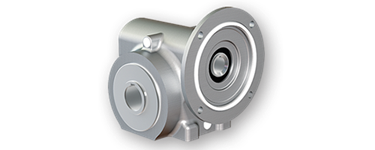Mobile:+86-311-808-126-83
Email:info@ydcastings.com
English
precision investment casting
Precision Investment Casting Revolutionizing Manufacturing
In the realm of manufacturing, precision investment casting has emerged as a game-changer, offering unparalleled accuracy and efficiency in producing complex metal components. This advanced method of metal casting combines traditional techniques with modern technology, resulting in products that meet the highest standards of quality and precision. Understanding the intricacies of precision investment casting is essential for industries that rely on durable and accurate parts, such as aerospace, automotive, medical, and military applications.
What is Precision Investment Casting?
Precision investment casting, also known as lost-wax casting, is a process that involves creating a detailed wax model of the desired part, which is then coated in a ceramic shell. Once the ceramic material hardens, the wax is melted and drained away, leaving a hollow cavity that precisely mirrors the original model. Molten metal is then poured into this cavity, allowing it to solidify into the final product.
The process begins with the creation of the wax pattern, which can be produced with remarkable detail, enabling the casting of intricate geometries that other methods struggle to achieve. After the wax is shaped, it is subjected to several layers of ceramic material, providing the necessary support and surface finish. Once the shell has cured, the wax is removed, usually through heating, thus preparing the mold for metal casting.
Advantages of Precision Investment Casting
1. High Precision and Accuracy One of the primary benefits of precision investment casting is its ability to produce parts with tight tolerances. This allows manufacturers to create intricate designs that meet exact specifications, resulting in components that fit together seamlessly.
2. Complex Shapes Unlike traditional casting methods, precision investment casting can produce highly complex and detailed shapes without the need for extensive machining. This is particularly advantageous in industries where design intricacy is critical, such as aerospace.
3. Material Versatility This casting method can be employed with a wide range of metals and alloys, including stainless steel, aluminum, and titanium. This broad compatibility makes it suitable for various applications across different industries.
precision investment casting

4. Reduced Waste The investment casting process is known for its efficient use of materials. The substantial reduction in excess metal and scrap contributes to cost-effectiveness and sustainability, aligning with modern manufacturing practices that emphasize minimal waste.
5. Enhanced Surface Finish Parts produced through precision investment casting generally have superior surface finishes, reducing the need for secondary operations such as machining or polishing. This not only saves time but also enhances the overall look and feel of the final product.
Applications Across Industries
Precision investment casting finds its applications in numerous industries. In aerospace, intricate components for engines and airframes are manufactured to withstand extreme conditions. The automotive sector benefits from lightweight, high-strength parts contributing to fuel efficiency and performance.
In the medical field, precision castings are used to create implantable devices and instruments that must meet stringent safety and performance standards. Similarly, the military relies on this technology to produce durable components for vehicles and equipment that operate under rigorous conditions.
The Future of Precision Investment Casting
As technology continues to evolve, so does the field of precision investment casting. The integration of computer-aided design (CAD) and advanced simulation software has revolutionized the design process, allowing for more efficient tooling and faster production times. Furthermore, the rise of additive manufacturing techniques is encouraging innovation in pattern production, paving the way for more cost-effective and flexible casting processes.
In conclusion, precision investment casting represents a significant advancement in manufacturing capabilities. By enabling the creation of high-precision, complex components with minimal waste, it stands at the forefront of modern industry practices. As industries demand higher performance and efficiency, investment casting is not only likely to remain a critical technology but also to continue evolving to meet future challenges.
-
Materials Used in Manufacturing Cap End Pipe FittingsNewsNov.24,2025
-
Material Properties of CF8M CastingNewsNov.24,2025
-
How to Inspect Pump Cap Ends for DamageNewsNov.21,2025
-
Backward Curved Impeller – Efficient Airflow Solutions for Industry | YD CastingsNewsNov.21,2025
-
Automobile Water Pump - Efficient, Quiet, Durable & ElectricNewsNov.21,2025
-
Impeller for Pumps – High-Efficiency, Durable, OEM-ReadyNewsNov.21,2025











